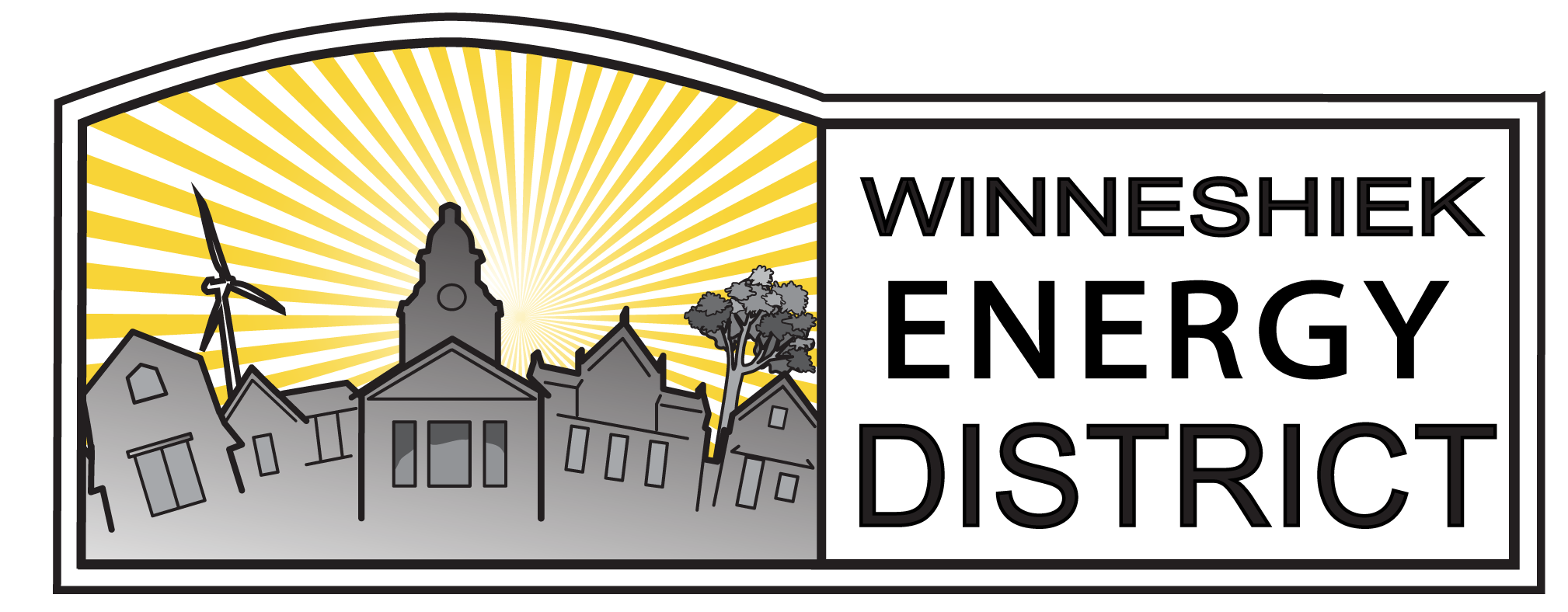Energy Burden in Rural America
Joel Zook, Energy Planner
The ACEEE article shared in this newsletter shows that rural American households are one-third more likely to be energy burdened than the average US household. There are several ways to calculate “energy burden” and not one agreed-upon definition. ACEEE defines “Energy Burdened” households as those who spend 6% of their annual income energy bills (electricity and heating fuel).
In last month’s newsletter, we highlighted the fact that Alliant Energy acknowledged in their rate increase request that approximately 50% of their residential accounts have a household income of less than $50,000 and 25% have incomes less than $25,000. The threshold for these homes to fall into the energy burdened category is a combined energy bill of $3,000 and $1,500 per year. $2,000 per year is a pretty reasonable cost for combined electric and gas bills, for a small and relatively efficient home. Most households with an income of $25,000 will be considered energy burdened. And several households could be considered energy burdened even with a house hold income of $50,000 per year. Older drafty homes will undoubtedly have higher energy expenses than average.
Rural residents outside of towns are further burdened by the fact that they likely have access to natural gas for space and water heating. Propane, heating oil and electricity all cost significantly more per unit of heat. (Residents of Riceville and Lansing, two of the larger towns in Iowa without natural gas service also experience this burden). Compounding the problem of propane simply being more expensive, its price can be far more volatile. Residential propane costs have been steady in the last two years, but everyone remembers what their heating bill looked 5 years ago when propane prices spiked to $2.50 per gallon or higher.
Energy burden as defined above just looks at home energy bills. But rural residents are also typically driving more miles and spending more on vehicle fuel than their urban counterparts. People typically pay close attention to the price of gasoline, because of the impact it has on their weekly budget.
The opportunity: Electrification
This all sounds pretty gloomy. Energy is what makes our modern life possible, do rural communities have any hope of controlling the impact energy costs have on them? Now that we’ve defined the problem that many rural communities face are there any solutions? The good news is YES – there are opportunities to help lower the energy needs while still providing the same services, or to start producing energy ourselves directly within our local communities.
First, vehicle electrification is a huge opportunity to lower transportation energy costs. Even with electric prices relatively high (compared to the rest of the state) running an electric car has a similar per-mile cost of a typical gas engine car filled with $1.25 gasoline. Both Alliant Energy and our local RECs have an optional Time-of-Day or EV specific rate structure that can lower energy costs for EVs even further. Rural areas can be at the forefront of the electric vehicle market. Because people drive more miles per year in rural areas, the potential savings from EV adoption is greater. Also, we don’t need to wait for the same amount of public charging infrastructure as our urban peers, because it is far more likely that we have our own garage to plug our cars in at night and when not driving. We’ll probably need an electric pickup truck option to get truly broad EV adoption in Winneshiek County. Vehicle manufacturers are already prototyping electric trucks.
Last summer Rocky Mountain Institute released a report titled The Economics of Electrifying Buildings. The report detailed the cost-benefit of switching from fossil fuel heating to electric heat pumps. Soon heat pump technology will improve to the point that it makes sense for everyone to use heat pumps for water and space heating. But because propane costs significantly more than natural gas, the opportunity is already here to switch out propane appliances for electric.
Electric heat pumps work by moving heat from outdoors into the house. They work the same way as an air conditioner but in reverse. Their technology is improving to the point where they can work efficiently even in sub-zero temperatures. When you are replacing your existing air conditioner, it is the perfect time to install an air-source heat pump that can handle both heating and cooling.
One last thing, increased installation of customer-owned solar will further the local energy economy. It’s even better if the solar on your roof can feed directly into your heat pump water heater or heating system without ever needed to go on the grid.
PS
It’s possible that adding a lot of new electrical load could stress the existing grid. If we do it intelligently we can make sure that we are using energy during times that solar and wind are producing. The link below is to a great explainer on how adding load to the grid, at the right time, will benefit everyone.
